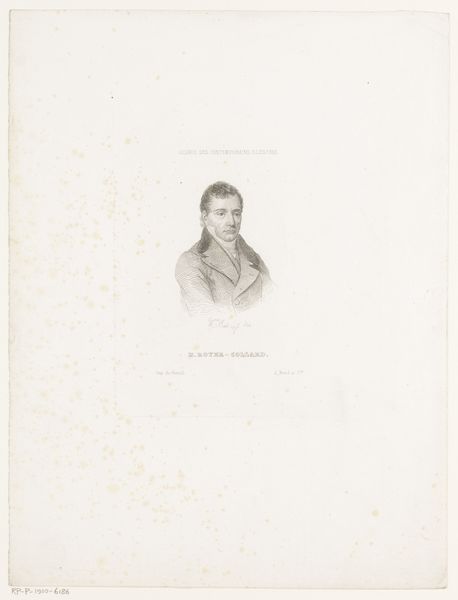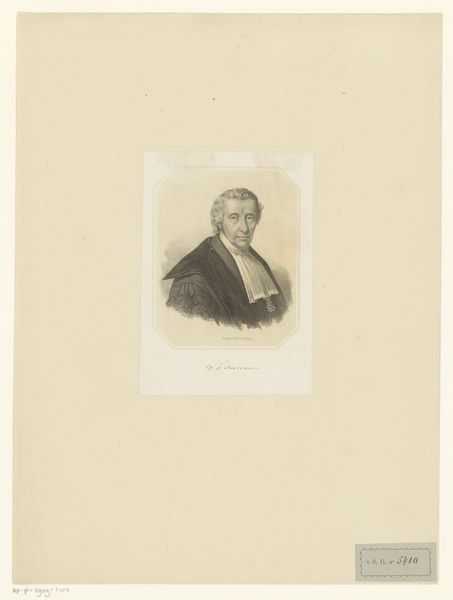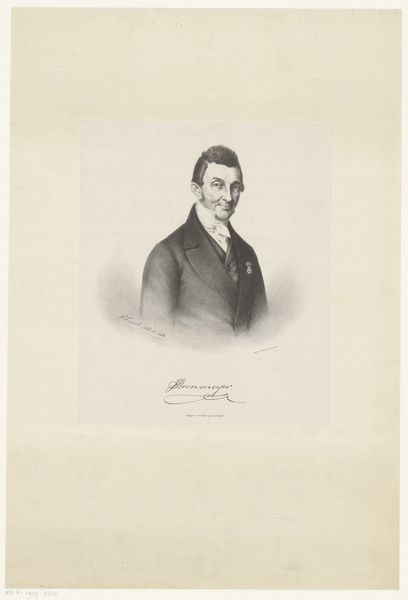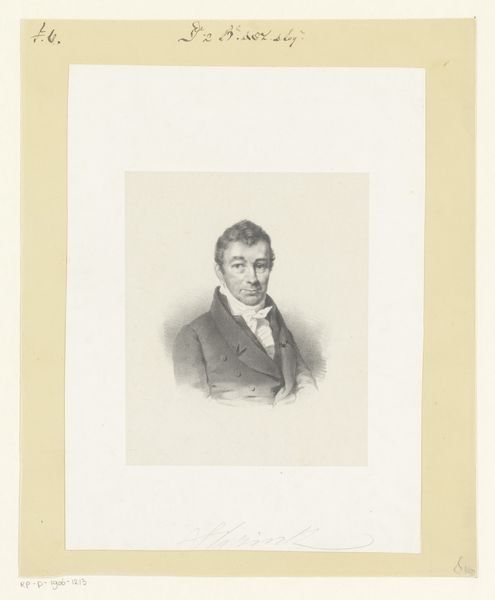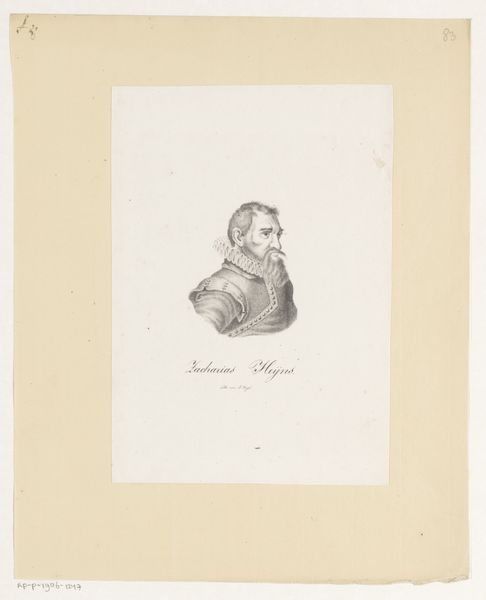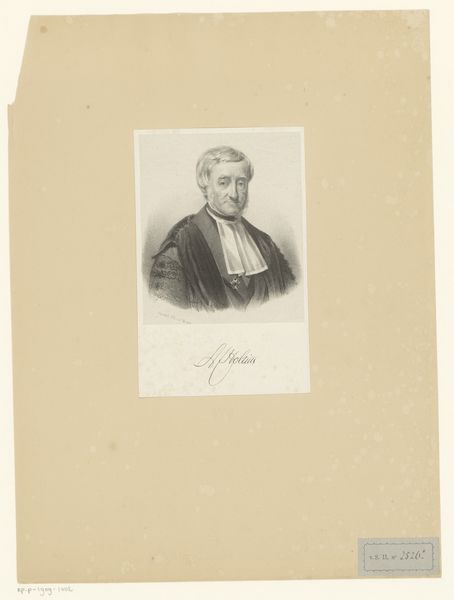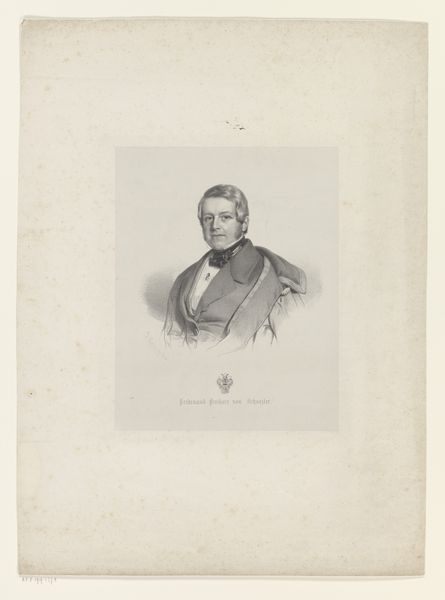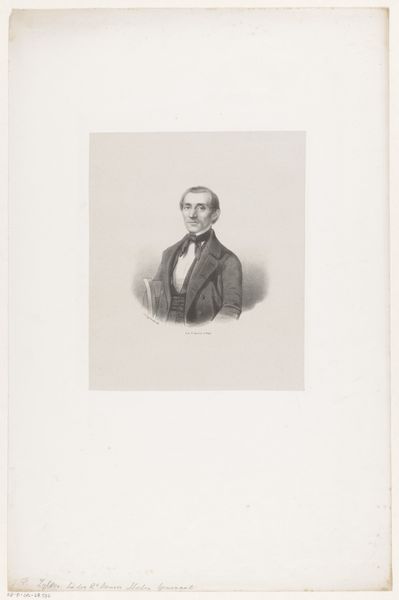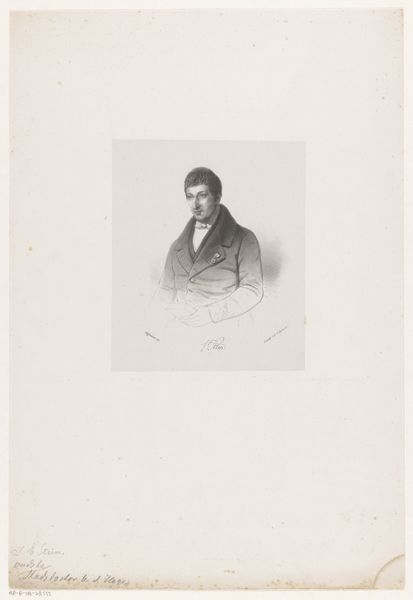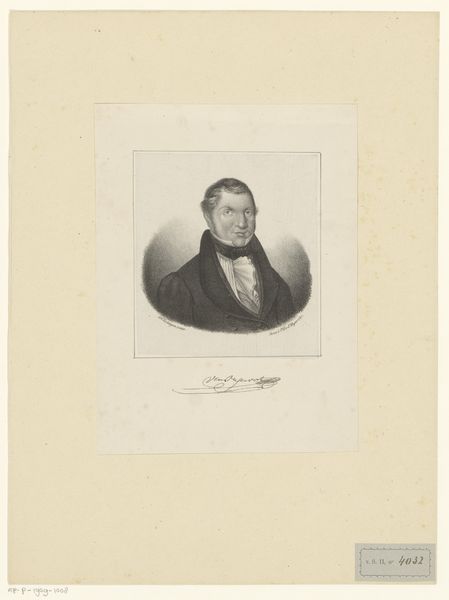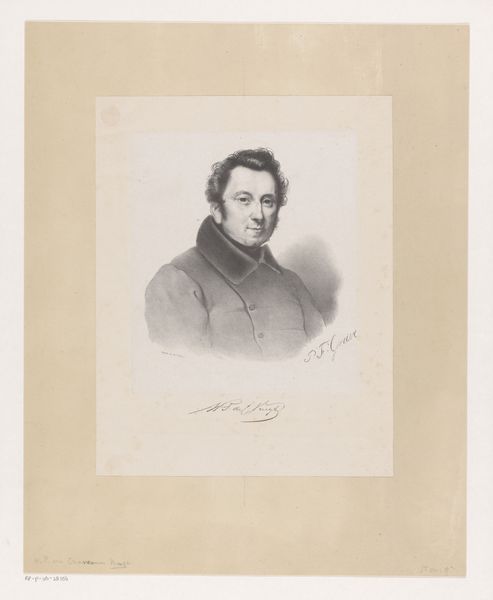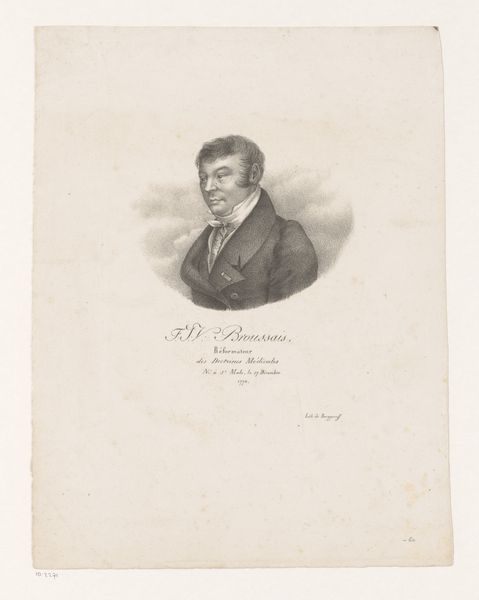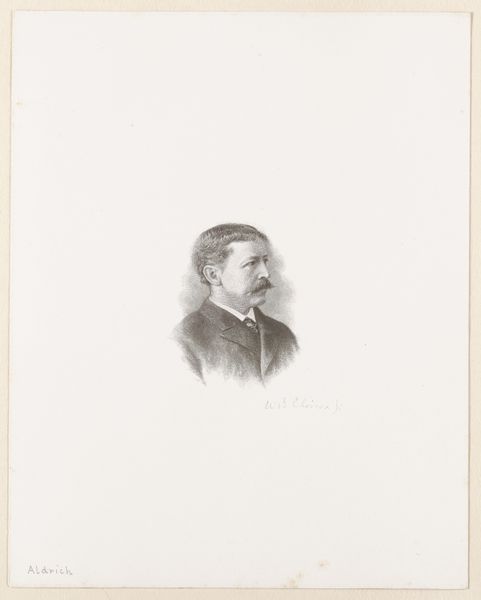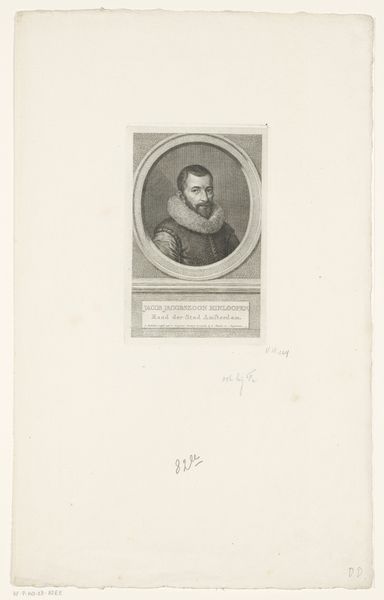
print, engraving
#
portrait
# print
#
engraving
#
realism
Dimensions: height 360 mm, width 270 mm
Copyright: Rijks Museum: Open Domain
This is a lithograph of Petrus Johannes Isaacus de Frémery, made by Johan Heinrich Neuman in the Netherlands during the 19th century. The artist presents us with a neatly dressed, seemingly important gentleman. But how does the image create this meaning? The mode of dress indicates a certain social standing. The man’s formal attire speaks to a world of commerce and social order. It may well be that he’s a member of the upper-middle classes; those who profited from the expansion of global trade, but also served in the institutions that made it possible. He may be a merchant, a lawyer, or a politician. What is interesting is that the Netherlands in the 19th century was going through a period of modernisation, so understanding the sitter's role in this shift is important. As historians, we can delve into archives and records to uncover more about the sitter, and about the artist who made this image. By understanding the context, we can start to see the complex meanings embedded in a portrait like this.
Comments
No comments
Be the first to comment and join the conversation on the ultimate creative platform.
